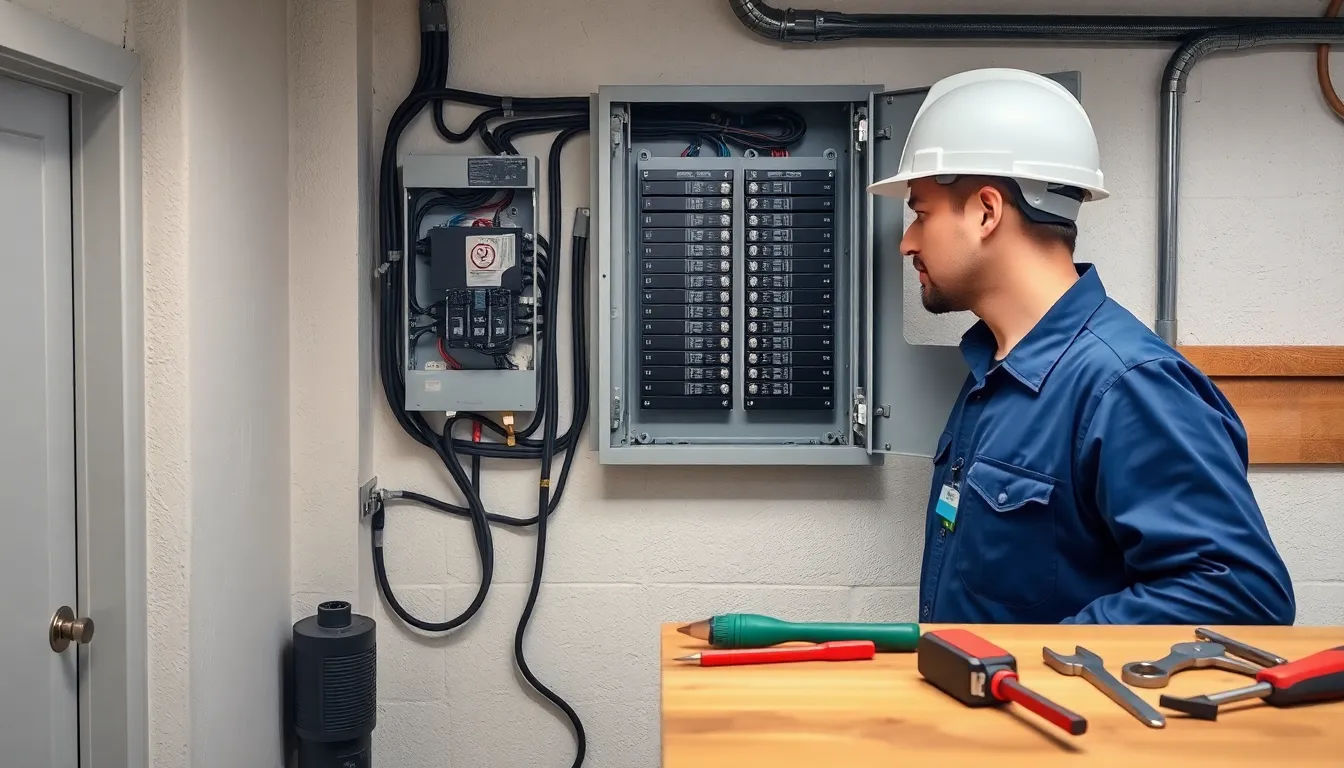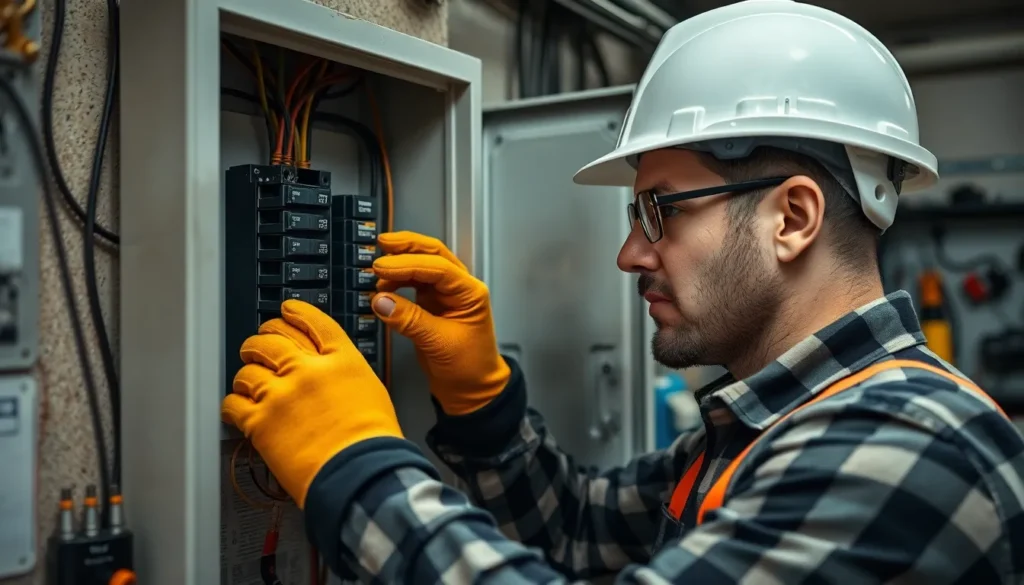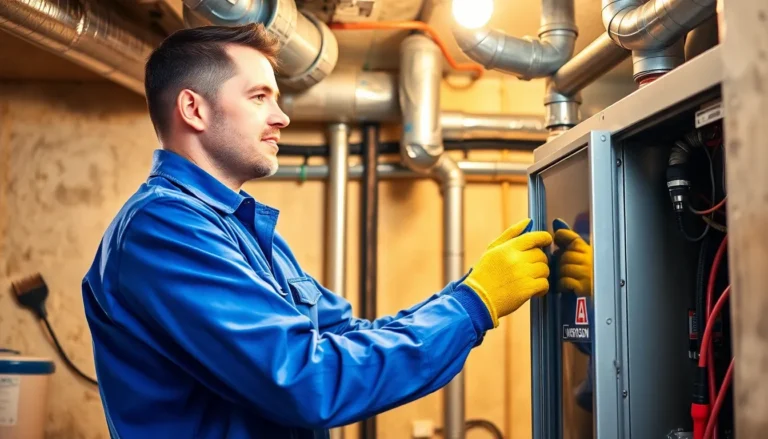Table of Contents
ToggleIn today’s fast-paced world, electrical upgrades have become essential for homeowners and businesses alike. As technology advances, the demand for reliable and efficient electrical systems grows. Outdated wiring and insufficient power supply can lead to safety hazards and hinder the performance of modern appliances.
Investing in electrical upgrades not only enhances safety but also boosts energy efficiency and increases property value. Whether it’s installing new circuit breakers, upgrading to LED lighting, or enhancing home automation systems, these improvements can transform any space. Understanding the importance of electrical upgrades can help individuals make informed decisions that lead to a more functional and secure environment.
Overview of Electrical Upgrades
Electrical upgrades encompass essential improvements to existing systems, addressing both safety and efficiency. Upgrading wiring, circuit breakers, and outlets mitigates risks related to outdated infrastructure. A modern electrical system prevents potential fire hazards and electrical shocks.
Upgrades improve energy efficiency. For instance, replacing incandescent bulbs with LED lighting decreases energy consumption, which leads to lower utility bills. Additionally, incorporating smart home technology optimizes energy usage, providing convenient control over appliances and lighting.
Upgrading systems not only enhances safety and efficiency but also increases property value. Homes with updated electrical systems appeal to prospective buyers, leading to higher resale prices. Investing in electrical upgrades represents a proactive step towards ensuring a safe, efficient, and modern living or working environment.
Electrical updates include:
- Wiring Replacement: Outdated or damaged wiring can pose severe risks. Replacing it enhances safety.
- Circuit Breaker Upgrades: Modern circuit breakers offer better protection and functionality. Upgrading these ensures compliance with current safety standards.
- Lighting Upgrades: Transitioning to energy-efficient lighting reduces costs and improves illumination.
- Home Automation Systems: Smart technology adds convenience while optimizing energy efficiency.
Prioritizing electrical upgrades enables safe, efficient, and sustainable environments for both residential and commercial spaces.
Types of Electrical Upgrades

Electrical upgrades can enhance safety, efficiency, and convenience in both residential and commercial settings. Different types address specific needs and challenges.
Residential Upgrades
Residential upgrades focus on modernizing home electrical systems. Common upgrades include:
- Wiring Replacement: Upgrading old wiring prevents fire hazards and electrical failures. Copper wiring improves conductivity and safety.
- Circuit Breaker Panels: Replacing outdated panels increases capacity and reliability. Modern circuit breakers provide overload protection and minimize risks.
- Smart Home Technology: Integrating smart devices allows remote control of lighting, heating, and security. Home automation enhances convenience and energy efficiency.
- Energy-Efficient Lighting: Installing LED fixtures reduces consumption and lowers utility bills. LED lighting also provides better illumination and longevity.
- Outlet and Switch Upgrades: Installing GFCI and AFCI outlets enhances safety in wet areas. Upgraded switches improve functionality and aesthetic appeal.
Commercial Upgrades
- Larger Circuit Systems: Expanding circuit systems accommodates increased electrical load. This upgrade supports larger equipment and reduces outages.
- Energy Management Systems: Implementing energy management technology optimizes consumption patterns. These systems help reduce operational costs and improve sustainability.
- Backup Power Solutions: Installing generators or UPS systems ensures continuity during outages. These solutions protect sensitive equipment and maintain productivity.
- Lighting Enhancements: Upgrading to smart or LED lighting improves energy efficiency and employee productivity. Proper lighting enhances visibility and reduces eye strain.
- Surge Protection Devices: Installing surge protectors safeguards equipment from voltage spikes. This upgrade prolongs the lifespan of expensive machinery and electronics.
Benefits of Electrical Upgrades
Electrical upgrades offer numerous advantages, primarily focusing on safety improvements and enhanced efficiency. The following points detail specific benefits that come with modernizing electrical systems.
Increased Safety
Increased safety arises from replacing outdated wiring and circuit breakers. New electrical components decrease the risk of electrical fires and shocks, which often occur due to faulty or antiquated systems. Homes and businesses benefit from updated connections that adhere to current safety codes, ensuring reliable power distribution. Installing ground fault circuit interrupters (GFCIs) and arc fault circuit interrupters (AFCIs) provides additional protection against hazardous electrical conditions. Upgrades promote a safer environment for occupants.
Improved Efficiency
Improved efficiency results from integrating energy-efficient technologies and higher-capacity systems. Transitioning to LED lighting drastically reduces energy consumption compared to traditional bulbs, which translates to lower utility bills. Smart home systems optimize electricity usage by automatically adjusting lighting and temperature based on occupancy. Upgraded circuit breakers can support additional circuits, allowing for the safe use of modern appliances without overloading the system. Enhanced efficiency not only reduces costs but also positively impacts overall environmental sustainability.
Considerations Before Upgrading
Evaluating various factors before initiating electrical upgrades is essential for informed decision-making. These considerations impact both the process and outcome of the upgrade.
Cost Factors
Cost significantly influences the decision to upgrade electrical systems. Expenses typically fall into four main categories:
- Materials: Quality and type of materials directly affect the total expense. Options such as copper wiring and circuit breakers vary in price.
- Labor: Skilled electricians charge by the hour or project. Hiring licensed professionals ensures safety and compliance with code requirements.
- Permits: Local regulations often require permits for electrical work. Costs associated with these permits can vary based on location and project scale.
- Upgrades: Scope of the upgrade determines cost. Full rewiring, for example, incurs higher expenses compared to minor improvements.
Professional Consultation
Seeking professional consultation is vital before proceeding with upgrades to electrical systems. Benefits of consultation include:
- Assessment: Professionals evaluate existing systems to identify necessary improvements and potential risks.
- Expertise: Electricians possess detailed knowledge of codes and regulations, ensuring compliance throughout the project.
- Scope Definition: Consultation helps clarify the upgrade’s scope, identifying crucial areas needing attention.
- Cost Estimates: Professionals provide accurate cost estimates, aiding budget preparation and financial planning.
Engaging experts during the upgrading process enhances safety and efficiency, leading to more satisfactory outcomes.
Investing in electrical upgrades is essential for modern living and working environments. By addressing outdated wiring and insufficient power supply, individuals can significantly enhance safety and efficiency. The transition to energy-efficient lighting and smart home technology not only lowers utility costs but also boosts property value.
Prioritizing these upgrades ensures compliance with safety codes while providing peace of mind. Engaging professionals for assessment and installation is crucial for achieving optimal results. As technology continues to advance, staying ahead with electrical upgrades will create a more functional and secure space for everyone.




